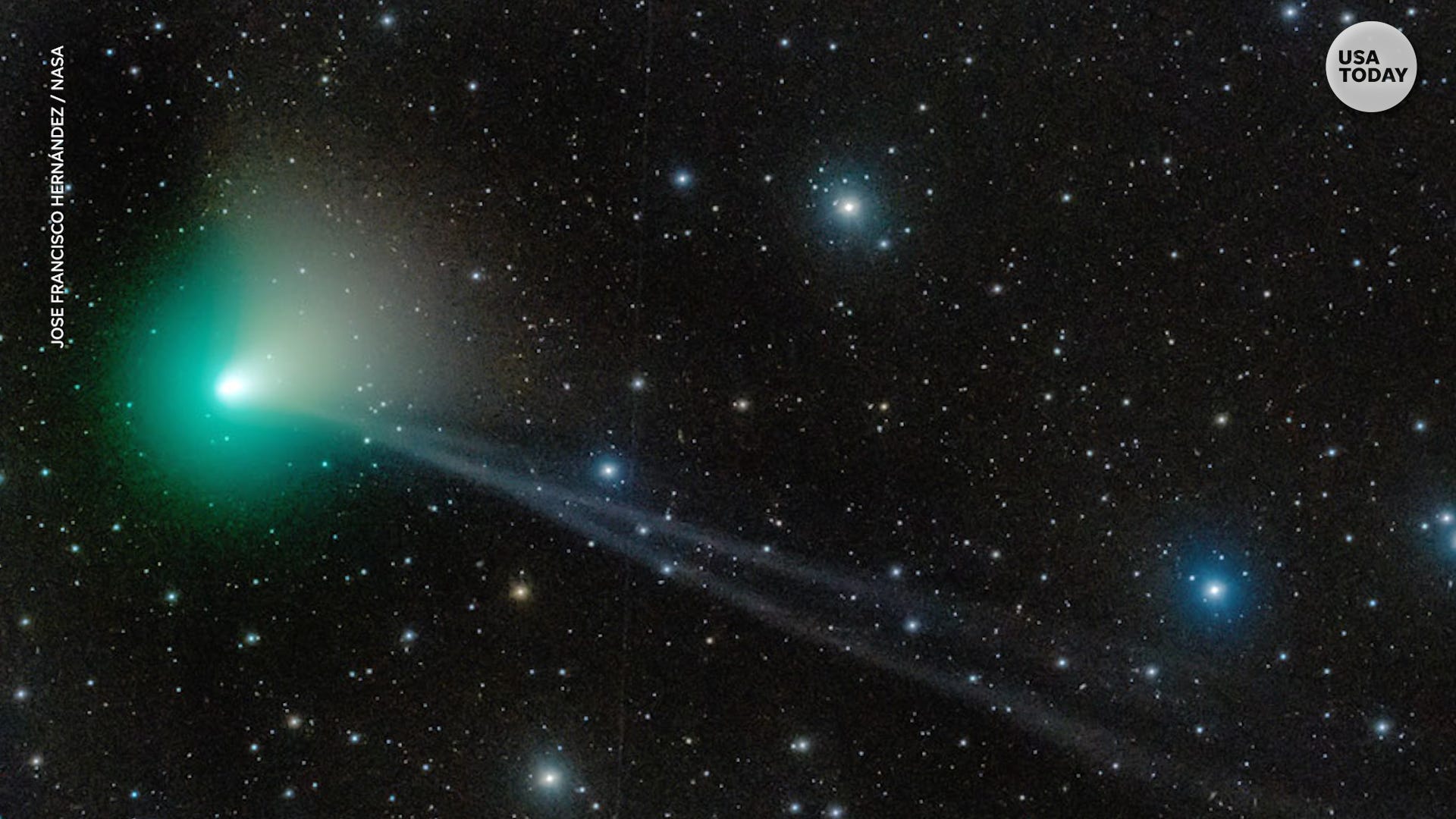

Green comet to pass Earth, won’t be back for another 50,000 years
Astronomy experts say if the comet dubbed C2022 E3 ZTF ever returns, it won’t be at least for another 50,000 years.
Scott L. Hall, USA TODAY
As space objects go, comets and meteors are not very big. While a planet like Earth is about 8,000 miles in diameter and a star like our Sun is about 865,000 miles across, the largest asteroid, Ceres, is only about 600 miles wide and the largest comet, Bernardinelli-Bernstein, has a diameter of only 80 miles. But what they lack in size, they make up for in quantity. Recently, astronomers have been making fascinating discoveries of these tiny objects.
A comet’s life
Comets are small chunks of ice and dust only a few miles wide that circle the Sun in long, looping orbits. For most of their lives, they dwell at incredible distances from the Sun invisible to all but the most powerful telescopes. But for a few months during every orbit, they may swing so close to the Sun that they heat up. Ices turn to gasses and geysers of material erupt from the nucleus of the comet to form a bright head and a long wispy tail.
Some comets, like Halley’s Comet, have shorter orbits that bring it near the Sun every 75 years. Other comets like Hale-Bopp, which memorably lit up the evening skies in 1997, will not be back around for almost 2,500 years.
A Devil Comet
Comet 12P/Pons-Brooks recently made headlines when images showed two plumes of gas springing from its surface. The hornlike shapes of these gasses inspired the nickname “The Devil Comet.”
There is nothing demonic or biblical about Comet Pons-Brooks and it will have absolutely no chance of hitting our planet. At its closest in June 2024, Comet Pons-Brooks will still be about 144 million miles from Earth. But there is a small chance that it could brighten significantly in April 2024 and be visible with binoculars that month.
Asteroids
Asteroids are small, rocky objects that orbit the Sun but are not considered to be planets or moons. Most of the asteroids in our solar system circle the Sun at a distance between the orbits of Mars and Jupiter. This area is called the Asteroid Belt. Some asteroids also venture into the inner solar system and fly by Earth (called Near Earth Asteroids) while others hang around the larger planets Jupiter and Saturn.
Astronomers have discovered about 1.3 million asteroids in our solar system. Several telescopes are conducting robotic sky surveys to map out the inner solar system and look for potentially hazardous asteroids that may one day hit the Earth. So far, none of the discovered asteroids is on a collision course with our planet.
Asteroids captured
On September 24, 2023, NASA’s OSIRIS-REx mission brought pieces of an asteroid to Earth. Launched in 2016, OSIRIS-REx flew to the asteroid Bennu where it circled the small rocky world from 2018-2021. During its time there, the spacecraft briefly landed on Bennu, scooped up some asteroid dust, and then zoomed back into space.
Then, earlier this year, as OSIRIS-REx rocketed past Earth, it landed a small capsule with the asteroid material in Utah. Astronomers are currently studying the samples as OSIRIS-REx continues to its next target, an asteroid named Apophis, which it will reach in 2029.
Dinky double take
NASA’s Lucy mission launched in 2021 with the goal of flying by eight different asteroids. Lucy’s first stop was the ½-mile wide asteroid Dinkinesh. Nicknamed “Dinky” the asteroid is the smallest asteroid visited by a spacecraft.
As Lucy approached the asteroid, cameras picked up something extra: an even tinier moon circling the dinky asteroid. As the spacecraft continued passing the Dinkinesh system, astronomers were surprised to find that it was not just one moon, but two objects that were touching. This is called a contact binary, two separate objects that are loosely bound by gravity and move through space together.
The next stop for the Lucy mission is a flyby of Earth in 2024 to propel it toward asteroid Donaldjohanson in 2025. After that, Lucy will head out to the orbit of Jupiter and explore a series of asteroids named Trojans beginning in 2027.
Meteor shower
Comets and asteroids also produce some of the greatest nighttime shows on Earth: annual meteor showers. As comets approach the Sun, pieces of the comet are left behind and, on some occasions, can slam into the Earth creating spectacular shooting stars.
The Leonid Meteor shower peaks on the mornings of Nov. 17 and 18. The shooting stars you may see will be parts of an old comet called 55P/Tempel-Tuttle.
Cometary pieces are mostly made of ice and dust and are so small that they completely burn up before hitting the ground. On a good year, you may see between 10-20 Leonid meteor streaks per hour.
Dean Regas is an astronomer and author of six books, including “1000 Facts About Space” and “How to Teach Grown-Ups About Pluto” and host of the popular astronomy podcast “Looking Up with Dean Regas”. He can be reached at www.astrodean.com

